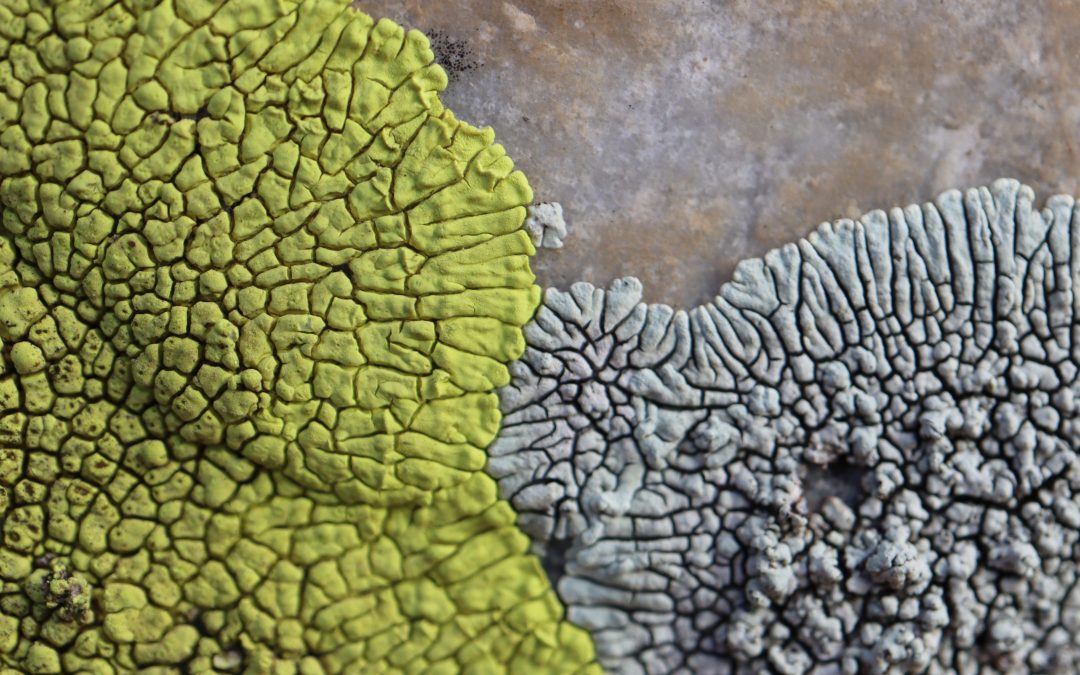
Lichens are the result of a mutually beneficial association: a symbiosis. In this case, the main components are a filamentous fungus, almost always an ascomycete, and a population of green cells that may correspond to a chlorophyte alga or a cyanobacterium. The fungus is responsible for the three-dimensional and highly organised construction of the lichen and the alga is the source of carbohydrates on which both symbionts feed. Recently, other microbial components linked to the lichen symbiosis that were previously/until now unknown have also been found in abundance: numerous very specific bacterial colonies grow attached to or within the lichen, and single-celled yeasts colonise the cortical layers of many species. It is therefore a complex association; a micro-ecosystem.
Lichens are mostly organised in layers, analogous to the structure of the leaves of a tree. At the top, the fungus builds up a tough crust of thick-walled cells and accumulates crystals and brightly coloured pigments. Just below this protective covering, but as close as possible to the light, the green cell population of the photosymbiont is distributed. Most often, these are unicellular chlorophytes, with large spheroidal cells filled with a solitary, but huge chloroplast. These green globules are closely embraced by the tubular cells («hyphae») of the fungus. It is, however, a delicate embrace, neither deforming nor penetrating the algal cells, but eagerly absorbing the sugary substances produced by photosynthesis. Beneath this active symbiotic layer, a cottony area of long intertwining hyphae unfolds, which contributes to the aeration and flexibility of the lichen. Then, in many cases, a cortical layer develops, symmetrical to the upper one, from which hairs, cilia or rhizines may arise to help attach the lichen to the substrate.
In spite of basically being filamentous fungi, lichens have explored a multitude of forms and growth strategies. They can be mistaken for a simple patch on bark or rock, as if someone had been testing colours with sprays before starting a graffiti. Surely, many mountaineers or hikers take for natural colour of stones and logs what is in fact a continuous lichen cover. Many others have a more developed, more foliaceous appearance; their lobes extend over the substrate to which they adhere by means of hairs on their underside. In other cases, they are unmistakable, even to the uninitiated person, because they hang like long beards from tree branches or grow like small bushes on rocks. Hanging lichens only exist in ancient forests, which enjoy pure, fresh air. For Tolkien they were the companions of the walking trees, the «Elms», and their old forests.
